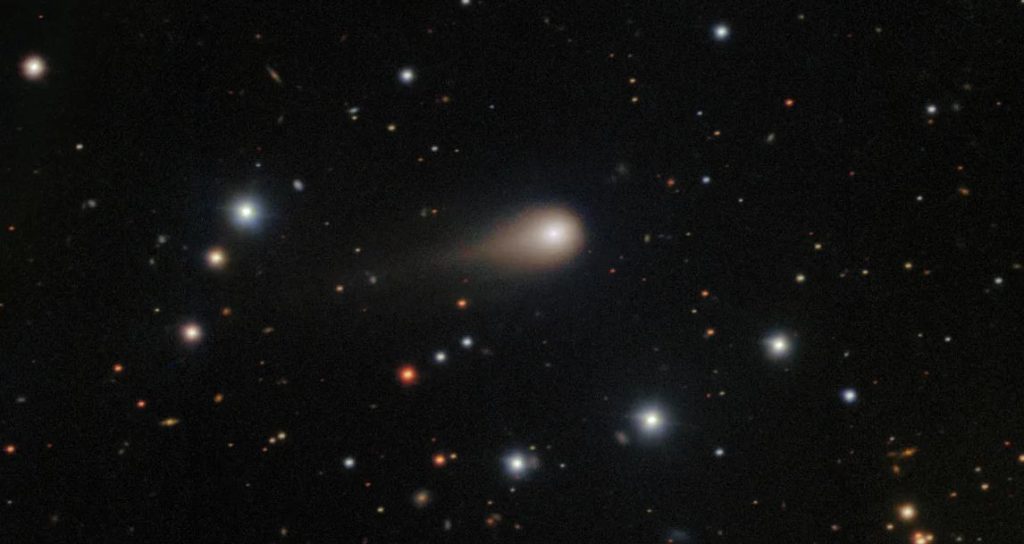A mysterious object, known as 3I/ATLAS, has captured the attention of astronomers worldwide. As it speeds through our solar system, NASA has observed unexpected changes in its trajectory. The interstellar visitor appears to be accelerating in ways that cannot be explained by the Sun’s gravity alone, leaving scientists intrigued and puzzled.
From 130,000 to 152,000 MPH
3I/ATLAS entered the solar system traveling at over 130,000 miles per hour. Following its closest approach to the Sun on October 29, a point known as perihelion, its speed surged to approximately 152,000 miles per hour. While part of this boost can be attributed to the Sun’s gravitational pull, the degree of acceleration and the object’s altered path suggest additional forces may be at play.

Questioning Its Cometary Nature
Typically, comets heat up near the Sun, causing ice to vaporize and release jets of gas. These jets often change the comet’s trajectory. However, 3I/ATLAS has shown no clear evidence of gas emissions, casting doubt on its classification as a traditional comet. Harvard physicist Avi Loeb has noted that the lack of a visible gas cloud challenges the conventional explanation of cometary movement. If no emissions are detected, the acceleration could stem from an entirely different phenomenon.
Could It Be Something Else?
The unusual speed increase has led some experts to speculate about more exotic possibilities. After passing perihelion, 3I/ATLAS continued to accelerate slightly, in a manner not aligned with gravitational predictions. Scientists have estimated that, if caused by normal cometary processes, the object would need to have lost at least 13 percent of its mass. However, no dust or gas cloud has been observed to support this scenario.
Observations and Future Investigations
NASA and other observatories are closely monitoring 3I/ATLAS as it approaches its closest point to Earth, expected in approximately six weeks. In December, the James Webb Space Telescope is scheduled to examine the object for any residual gas or debris that might clarify its nature. Until then, astronomers continue to analyze the unexpected acceleration and explore potential explanations, ranging from unknown natural forces to hypothetical advanced propulsion.
Public Fascination
The unusual behavior of 3I/ATLAS has captured public imagination, with discussions ranging from scientific analysis to speculation about extraterrestrial technology. While there is no definitive evidence suggesting anything artificial, the object’s behavior is a rare anomaly that challenges current understanding of interstellar objects. Scientists emphasize the importance of careful observation and data collection to avoid premature conclusions.
What Makes 3I/ATLAS Unique
3I/ATLAS is among the fastest interstellar objects ever recorded in our solar system. Its trajectory and acceleration patterns differ significantly from typical comets or asteroids. The absence of a significant gas cloud despite its high speed makes it one of the most mysterious objects studied in recent years. Researchers hope that continued observation will provide new insights into the dynamics of interstellar visitors.

Awaiting Answers
As 3I/ATLAS moves closer to Earth, scientists remain vigilant. The data collected will help refine models of celestial mechanics and improve understanding of interstellar phenomena. Whether the object behaves like a conventional comet or surprises observers with something entirely unexpected, it serves as a reminder of the vast mysteries of our cosmic neighborhood.

















